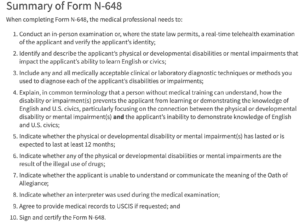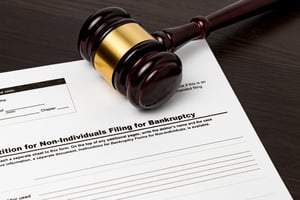Getting Back Money Garnished Before Filing for Bankruptcy in St. Paul, MN
Once a creditor files a lawsuit and gets the court to enter a judgment against a person for they can then take action against that person to collect on the judgment. One of the ways a creditor can collect on their judgment is by garnishing the person’s wages. In Minnesota, a creditor may garnish up to 25% of a person’s net pay (the money they actually take home after deductions, like taxes, are taken out of their paycheck). This can cause a significant hardship to that person’s financial circumstances, especially if a person is already struggling to make ends meet and is living paycheck to paycheck.
Sometimes, a person who files a chapter 7 or chapter 13 bankruptcy case (aka a “debtor”) may be able to get back wages that were garnished from them prior to filing their case. When a creditor garnishes a total of $600, or more, within the 90 day period before the debtor files their bankruptcy case, the debtor may have a legal right to demand that the garnished funds be returned. However, whether this right exists depends upon whether the debtor uses State or Federal exemptions to “exempt,” or legally protect their property, from being used to pay debts to creditors in their bankruptcy case.
In St. Paul, Minnesota, debtors have the option of choosing either State or Federal exemptions to exempt their property. When a debtor has a large amount of equity in the home they own, they need to use State exemptions to make sure their home is protected. This is because the Minnesota exemptions exempt up to $450,000 in equity in a person’s primary residence. Therefore, a person who owns a home worth $400,000, and a mortgage balance of $300,000, has $100,000 in equity in their home, which would be exempt under the Minnesota State exemptions. Although Minnesota exemptions are good for making sure the debtor’s home is exempt, and protected, in bankruptcy, a debtor who uses Minnesota exemptions does not have a legal right to have their garnished wages returned. This is because, unlike with the Federal exemptions, the Minnesota exemptions do not provide for a special “wildcard” exemption.
Federal exemptions only provide an exemption for equity in a debtor’s home up to $27,900. However, under the Federal exemptions, there exists a “wildcard” exemption which essentially can be used to protect any property that the debtor has that is not specifically exempt under another exemption. Since the debtor’s right to receive funds garnished in the 90 day period prior to filing a bankruptcy case is not specifically exempt under the Federal exemptions, the debtor must use the wildcard exemption to exempt them. The amount of wildcard exemption available to exempt the garnished funds varies depending upon how much equity the debtor has in their home. Basically, the less equity the debtor has in their home the greater the amount of the wildcard exemption available, with the maximum amount of wildcard being $15,425. Typically, when a debtor elects Federal exemptions, there is a sufficient amount of a wildcard to fully exempt, and protect, the debtor’s right to receive the garnished funds.
Even when the debtor has the right to receive the garnished funds, actually getting the funds back from the creditor is not always automatic. The debtor’s attorney should send a demand to the creditor when the case is filed to return the garnished funds ASAP. Not surprisingly, the creditor often takes their sweet time returning the garnished funds. It is also a good idea for the debtor’s attorney to also notify the creditor’s attorney that the funds should be returned to the client. The creditor’s attorney can often convince the creditor that it is in the creditor’s best interest to return the funds or face the legal consequences for refusing to do so. If the creditor is slow or reluctant to return the exempt garnished funds to the debtor, the debtor may be forced to file an “adversarial action” against the creditor to get the money back. An adversarial action is essentially a separate lawsuit within the bankruptcy case, in which the debtor specifically asks the bankruptcy court to order the creditor to return the garnished funds to the debtor. The debtor must bring the adversarial action against the creditor before they receive their discharge, which is typically about 3 months after they file their case (60 days from the date of their creditor’s meeting). If the debtor does not bring an adversarial action against the creditor before their discharge is entered by the court they lose their right to legally demand that the creditor return the funds.
CALL NOW FOR A FREE STRATEGY SESSION FROM A MN BANKRUPTCY LAWYER AT LIFEBACK LAW FIRM
Bankruptcy law is complicated and creditors are not easy to deal with. For these reasons, a person considering filing for bankruptcy should first consult with an experienced bankruptcy attorney in St. Paul, MN to ensure they receive the best results in their case, including the return of any garnished funds which they have a legal right to get back. See us at Lifebacklaw.com!






